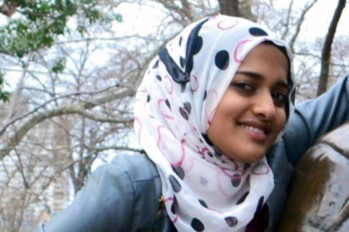Nobody likes a bully
STUDENT COLUMN
The Oxford Dictionary defines bullying as “the use of a superior strength or influence to intimidate someone.” When thinking of a bully, automatically one paints a picture of a hefty boy with spiky hair, holding a smaller kid against a locker. On television, the cafeteria in a high school rings while a bully is heard saying, “Give me your lunch money,” or, “Buy me lunch!”
However, there’s a difference between the bully portrayed on TV and the subtle bullying that currently occurs in high schools nationwide; the definition of a “bully” is not limited to the Oxford Dictionary’s.
A bullied individual is often exposed, repeatedly and over time, to negative actions by one or more people. The bullied individual also often has difficulty defending himself or herself.
Bullying has gotten out of hand in many schools. Statistics suggest that 23 percent of students in grades 4-6 are bullied, and that 17 percent of students in grades 6-10 are bullied sometimes. Additionally nearly 8 percent of students are bullied weekly, according to recent statistics.
Although the frequency and type of bullying taking place at schools nationwide varies, the effects are similar for the bully — the creation of fear, lower confidence levels, depression and even thoughts of suicide.
And a student doesn’t have to be unpopular to be bullied — that’s a common misconception.
Take the case of Alexis Pilkington, for instance. Pilkington was a 17-year-old student who had already landed a soccer scholarship. However, as much of a star as she was, her life was not all that great. She had become a target of bullying — harassing internet messages — and she felt that her only way out of was suicide. Pilkington took her own life nearly two years ago, in March 2010.
Shockingly, Pilkington’s bullies didn’t stop there — the Facebook page that was meant to be a tribute to Pilkington, created shortly after her death, quickly became a forum for some to post nasty comments about her, anonymously. After Pilkington’s death, many schools began to take bullying, and cyberbullying, more seriously.
I think that one of the most important bullying programs in America is Rachel’s Challenge, which was named after Rachel Scott, the first person to be killed at Columbine High School on April 20, 1999.
Scott was a compassionate and kind person, whose six diaries became the basis of the Rachel’s Challenge, which aims to create a safe learning environment for all students by re-establishing civility and delivering antidotes or cures to school violence and bullying. Its mission is to help inspire and empower students to make a positive change.
The objectives of Rachel’s Challenge are simple: One must create an environment of kindness and compassion within the school environment, and train students to make a difference in their place of learning. In 2008, impacted by Rachel’s Challenge, 123,000 schools nationwide documented acts of kindness, and 90 schools documented no suicides within the year.
Ninety-eight percent of schools that have participated in the program recommend it for other schools.
You don’t have to be an organization or school to take action against bullying. You help prevent bullying in many ways, in your own time. The simplest way? If you see someone being bullied, report it right away. Don’t just stand there and watch someone being bullied. Say something. If more than one person can intimidate the bully, he or she may not be a bully anymore.
You could also create a school group dedicated to preventing bullying. Additionally, be sure to denounce the act of bullying when you’re talking with your friends. What can you do if you’re a victim of bullying? Here are a few tips:
1) Stay confident: When you’re calm and collected, you are less likely to be picked on. Keep your head up, align your back and stay away from those who may cause trouble. Have a clear voice when being bullied. Be assertive and tell the bully, “Stop!” Veer your way around them and silently walk away.
2) Stand up to the bully: Either yell loud enough for an adult to hear, or look the bully in the eyes and speak with a firm voice, making sure to use calm and rational words. Do not reply with a mean statement — it will only make the problem bigger. In your head, just throw away the rude comment and replace it with something better.
3) Find someone you can trust and talk to. Tell them that you or someone you know is being bullied. They may be able to help.
Remember, bullies are insecure about themselves; they mistreat others to make themselves feel better. Never be afraid to confront a bully or talk to someone when you witness bullying firsthand.
Ummul Baneen Mohamedali, 17, is an 11th-grader at Sewanhaka High School.






